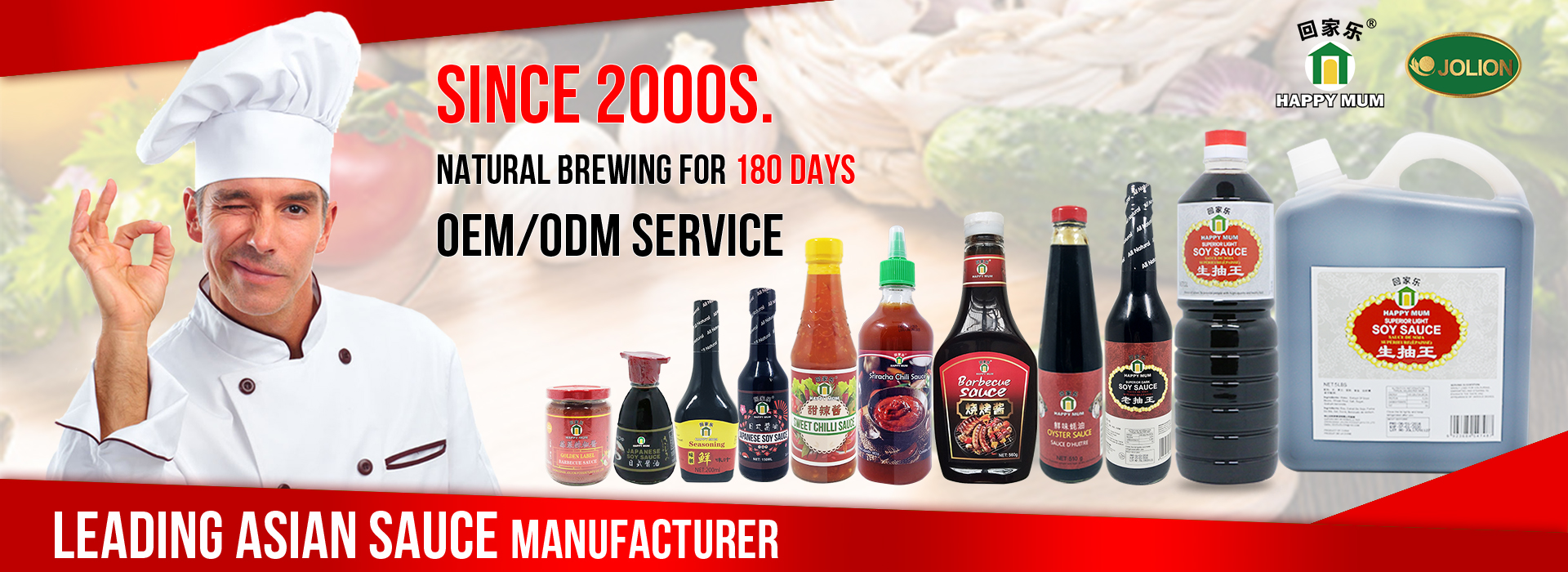
- Exploring JOLION Food's Exquisite Sauces and Noodles at SIAL PARIS 20242024-10-30SIAL PARIS, the renowned international food exhibition, is set to showcase a plethora of gastronomic wonders in 2024. Among the myriad of exhibitors, JOLION Food stands out as a beacon of culinary excellence, promising a delectable journey for food enthusiasts and industry professionals alike.
- The Mystery of Chilli Sauce2025-04-09
- Revealing The True Nature Of MSG2025-04-07
Is soy sauce acidic
Soy sauce contains organic acids. When the soy sauce koji is fermented in the tank, salt-tolerant lactic acid bacteria and other microorganisms grow. Its total acid is about more than 1% (usually a little more than a quarter of the white vinegar), but normally the high salt of soy sauce covers the sour taste. First of all, the process of soaking ginger will ferment to produce lactic acid. Secondly, soy sauce itself is sour, soaking ginger will reduce the salt, and there will be some lactic acid bacteria in the air and ginger. 1, uncooked soy sauce generally will not turn sour, may come into contact with bacteria to lead to acid bad, and can not be eaten.
Traditional soy sauce is fermented with soy beans and salt. The mash made is the "paste" of beans. After the sun has squeezed out the liquid, soy sauce is produced. When cooking, soy sauce is best left behind, not only to retain its flavor (which will turn sour after cooking), but also to retain the effective amino acids and nutrients in soy sauce. So it's normal.
Soy sauce is a traditional condiment in China. A liquid flavoring made from beans, wheat, or bran. Reddish-brown color, unique sauce fragrance, and delicious taste help to promote appetite.

Soy sauce evolved from the sauce. As early as three thousand years ago, there were records of making sauce in the Zhou Dynasty of China. The invention of soy sauce brewing by the Han laboring people in ancient China was discovered by accident. The earliest soy sauce, a condiment used by ancient Chinese emperors, was made of fresh meat, similar to the manufacturing process of today's fish sauce. Because of its excellent flavor, it gradually spread to the people. Later, it was found that soybeans were made with similar flavor and cheap, so it was widely eaten. In the early period, with the spread of Buddhist monks, spread all over the world, such as in Japan, Korea, and Southeast Asia. In the early days, the production of soy sauce in China was a kind of family art and secret. The brewing of soy sauce was mostly controlled by a certain master, and the techniques were often passed down from generation to generation or taught by a school of masters to form a certain brewing method.
The flavor and nutritional value of soy sauce depending on the content of amino acid nitrogen. Generally speaking, the higher the amino acid nitrogen, the higher the grade of soy sauce, that is to say, the better the quality.
The level of amino acid nitrogen represents the degree of flavor of soy sauce, which is of great significance as a standard to measure the grade of soy sauce. Therefore, most enterprises are constantly improving their preparation technology and research and development technology, and have reached the high standard of amino acid nitrogen, thus achieving higher commercial value.
Related News
- 2025-04-09The Mystery of Chilli Sauce
- 2025-04-07Revealing The True Nature Of MSG
- 2025-04-15The All-Natural Goodness of JOLION Foods Vegetarian Oyster Sauce: A Culinary Delight
- 2025-04-14From Condiment to Culinary Essential: Why Every Chef Needs Mushroom Soy Sauce
- 2025-04-13The Relationship Between Vinegar and Ammonia: Insights from JOLION Foods
- 2025-04-12Why Quality Matters: The Superior Ingredients of JOLION Foods Soy Sauce
Start Your Seasoning Sauce Business by a Free Quote
GET FREE QUOTES
If you are interested in our services, let's have a try on the first project
